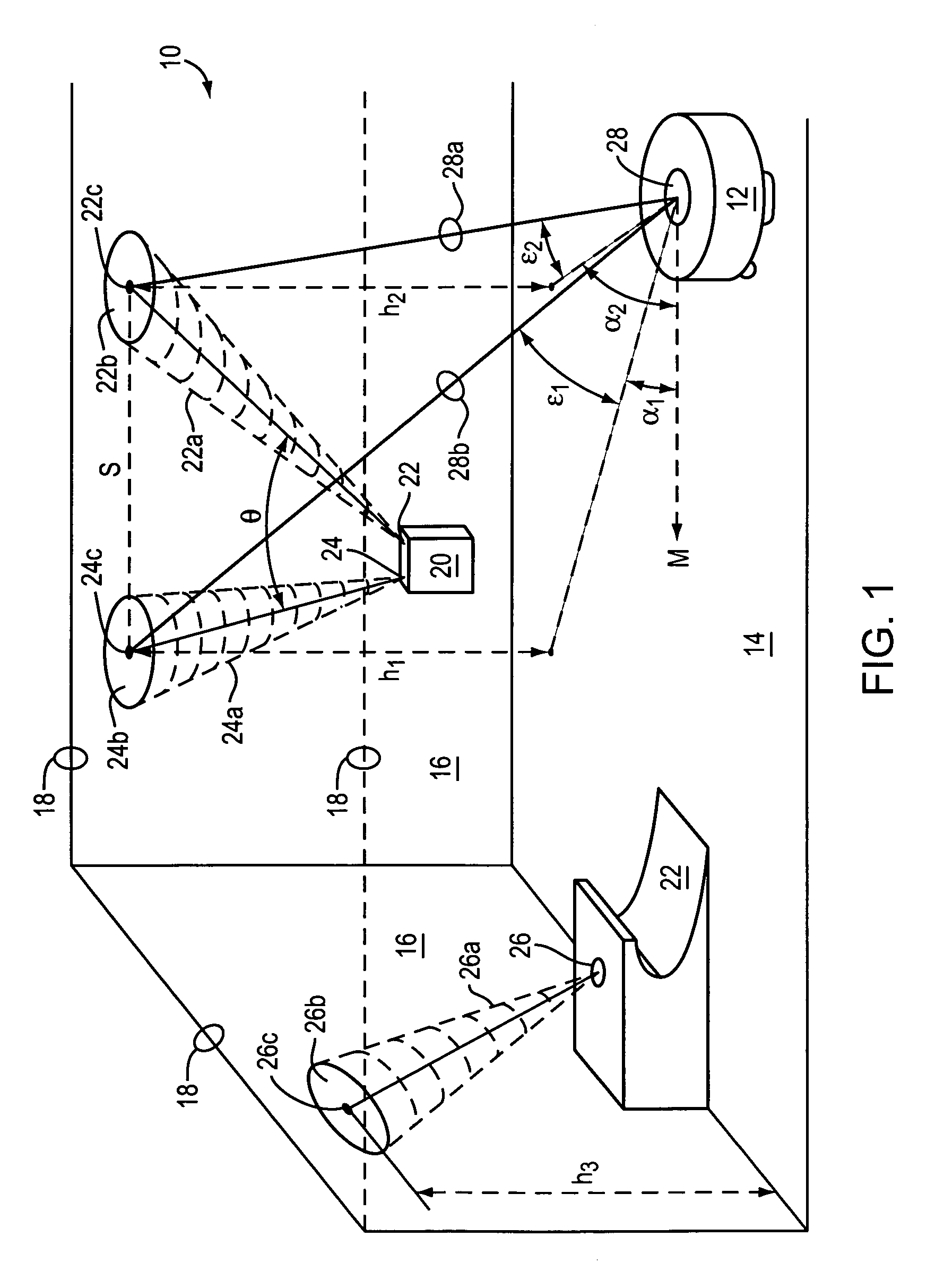Celestial navigation system for an autonomous robot
a navigation system and autonomous robot technology, applied in the field of robotic systems, can solve the problems of limited ability, time-consuming, or dangerous, types of systems, useful for obstacle avoidance, and systems, however, are also limited in their ability to allow a robot to navigate effectively
- Summary
- Abstract
- Description
- Claims
- Application Information
AI Technical Summary
Benefits of technology
Problems solved by technology
Method used
Image
Examples
Embodiment Construction
[0029]FIG. 1 is a schematic view of a navigational system 10 for an autonomous robot 12 in accordance with one embodiment of the invention. The components of the system 10 include, in this embodiment, a transmitter 20, a charging or base station 22, and a robot 12 that operates in a room or other similar working area 14. In this case, the working area 14 is a floor of a room, bounded at least in part by walls 16. Borders of a ceiling 18 also intersect the walls 16 and are remote from the working area 14. The depicted transmitter 20 includes two emitters 22, 24. In this embodiment, the base station 22 may include an emitter 26 as well. In various embodiments, any combination or quantity of emitters may be used on the base station 26, or transmitter 20, or both. The robot 12 includes an on-board microprocessor, power and drive components, task-specific components (dirt sensors, vacuums, brushes, etc.), and at least one receiver, such as a infrared receiver 28. The robot 12 may also in...
PUM
 Login to View More
Login to View More Abstract
Description
Claims
Application Information
 Login to View More
Login to View More - R&D
- Intellectual Property
- Life Sciences
- Materials
- Tech Scout
- Unparalleled Data Quality
- Higher Quality Content
- 60% Fewer Hallucinations
Browse by: Latest US Patents, China's latest patents, Technical Efficacy Thesaurus, Application Domain, Technology Topic, Popular Technical Reports.
© 2025 PatSnap. All rights reserved.Legal|Privacy policy|Modern Slavery Act Transparency Statement|Sitemap|About US| Contact US: help@patsnap.com



